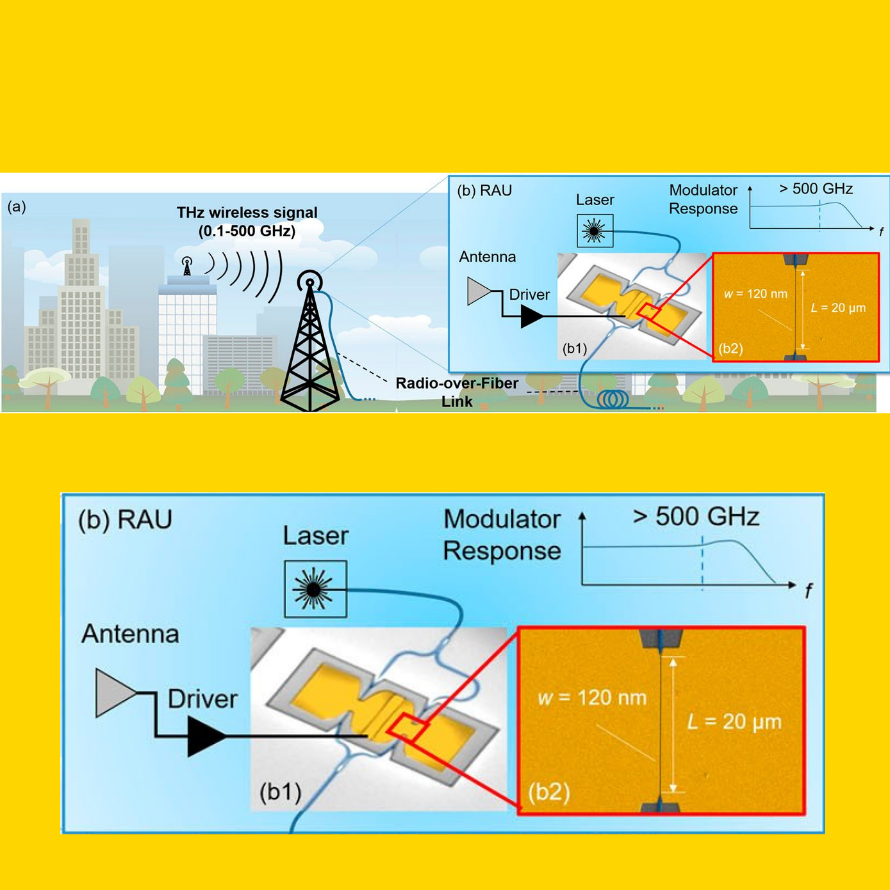500 GHz plasmonic Mach-Zehnder modulator enabling sub-THz microwave photonics
Burla, Maurizio, et al. “500 GHz plasmonic Mach-Zehnder modulator enabling sub-THz microwave photonics.” Apl Photonics 4.5 (2019): 056106.
Abstract:
Broadband electro-optic intensity modulators are essential to convert electrical signals to the optical domain. The growing interest in terahertz wireless applications demands modulators with frequency responses to the sub-terahertz range, high power handling, and very low nonlinear distortions, simultaneously. However, a modulator with all those characteristics has not been demonstrated to date. Here, we experimentally demonstrate that plasmonic modulators do not trade-off any performance parameter, featuring—at the same time—a short length of tens of micrometers, record-high flat frequency response beyond 500 GHz, high power handling, and high linearity, and we use them to create a sub-terahertz radio-over-fiber analog optical link.These devices have the potential to become a new tool in the general field of microwave photonics, making the sub-terahertz range accessible to, e.g., 5G wireless communications, antenna remoting, Internet of Things, sensing, and more.
FIG. 1. (a) A THz wireless communication scenario. (b) At the remote antenna unit (RAU), THz wireless signals are received by an antenna and converted to the optical domain to be transported over a radio-over-fiber analog link. A modulator with sub-THz bandwidth, high linearity, and high-power handling is needed to encode the THz signal onto an optical carrier with high fidelity. Inset: (b1) micrograph of a plasmonic Mach-Zehnder modulator with a plasmonic phase modulator in each arm; (b2) image of the 120 nm-wide, 20 μm-long phase modulator slot waveguide
